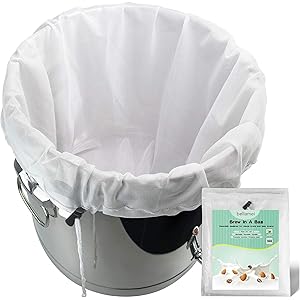Understanding Barleywine
Barleywine is a strong ale that is characterized by its high alcohol content, typically ranging from 8% to 12% ABV. This style of beer is brewed with a significant amount of malted barley, which contributes to its rich, sweet flavor profile. The brewing process often involves a long boil, which caramelizes the sugars and enhances the beer’s complexity. Barleywines can be categorized into two main types: English and American, each offering distinct flavor nuances. English barleywines tend to be more malt-forward with a toasty, nutty character, while American versions often showcase a more pronounced hop presence, resulting in a balanced bitterness.
Defining Malt Liquor
Malt liquor, on the other hand, is a type of beer that is brewed with a higher proportion of fermentable sugars, leading to an alcohol content typically between 6% and 12% ABV. Unlike barleywine, malt liquor is often produced using adjuncts such as corn or rice, which can dilute the malt flavor. The result is a lighter, crisper beverage that is generally more accessible to a broader audience. Malt liquors are often marketed in larger containers and are known for their affordability, making them a popular choice among consumers looking for a quick and potent drink.
Flavor Profiles: Barleywine vs Malt Liquor
When comparing the flavor profiles of barleywine and malt liquor, the differences become quite apparent. Barleywine is known for its rich, complex flavors that can include notes of caramel, toffee, dark fruits, and even a hint of alcohol warmth. The malt character is robust, providing a sweet backbone that balances the beer’s bitterness. In contrast, malt liquor tends to have a more straightforward flavor profile, often described as sweet and slightly fruity, but lacking the depth and complexity found in barleywines. The use of adjuncts in malt liquor can result in a cleaner, less malty taste, which appeals to those who prefer a lighter drinking experience.
Alcohol Content Comparison
One of the most significant differences between barleywine and malt liquor is their alcohol content. Barleywines are crafted to be strong, with ABV levels that can reach up to 12% or more. This high alcohol content is a result of the extensive use of malt and the brewing techniques employed. Malt liquor, while also capable of reaching similar ABV levels, typically falls within the 6% to 12% range, with many commercial brands hovering around the lower end. This difference in alcohol content not only affects the drinking experience but also the overall perception of each beverage.
Brewing Techniques
The brewing techniques used for barleywine and malt liquor also differ significantly. Barleywine requires a longer brewing process, with extended boiling times to caramelize the sugars and develop the desired flavors. This meticulous approach results in a beer that is rich and full-bodied. In contrast, malt liquor is often produced using a quicker brewing process, which can include the use of adjuncts to speed up fermentation. This efficiency allows for mass production, making malt liquor a more commercially viable option for breweries looking to cater to a broader market.
Get more content like this!
Sign up to receive updates and new terms first hand.
Serving Suggestions
When it comes to serving suggestions, barleywine is typically enjoyed in smaller quantities due to its high alcohol content and rich flavors. It is often served in snifters or tulip glasses, allowing the drinker to savor the complex aromas and tastes. Malt liquor, however, is usually served in larger containers, such as 40-ounce bottles or cans, and is often consumed quickly. The lighter nature of malt liquor makes it a popular choice for casual gatherings and social settings, while barleywine is more suited for sipping and appreciation.
Food Pairings
Food pairings for barleywine and malt liquor also vary significantly. Barleywine pairs well with rich, hearty dishes such as braised meats, strong cheeses, and desserts featuring chocolate or caramel. The beer’s sweetness and complexity complement these flavors beautifully. Malt liquor, on the other hand, is often paired with more casual fare, such as burgers, pizza, or spicy foods. Its lighter profile allows it to refresh the palate without overpowering the meal, making it a versatile choice for various dining experiences.
Cultural Perceptions
Culturally, barleywine and malt liquor occupy different spaces within the beer community. Barleywine is often regarded as a craft beer, celebrated for its complexity and depth, and is frequently featured in beer festivals and tastings. Malt liquor, however, is sometimes viewed as a more commercial product, associated with affordability and accessibility. This perception can influence consumer choices, with some beer enthusiasts gravitating towards barleywine for its artisanal qualities, while others may prefer the straightforward nature of malt liquor.
Conclusion: A Matter of Preference
Ultimately, the choice between barleywine and malt liquor comes down to personal preference. Each style offers unique characteristics that cater to different tastes and occasions. Whether one prefers the rich, complex flavors of barleywine or the lighter, more approachable nature of malt liquor, both beverages have their place in the diverse world of beer. Understanding the distinctions between these two styles can enhance the drinking experience and lead to more informed choices when selecting a beverage.




